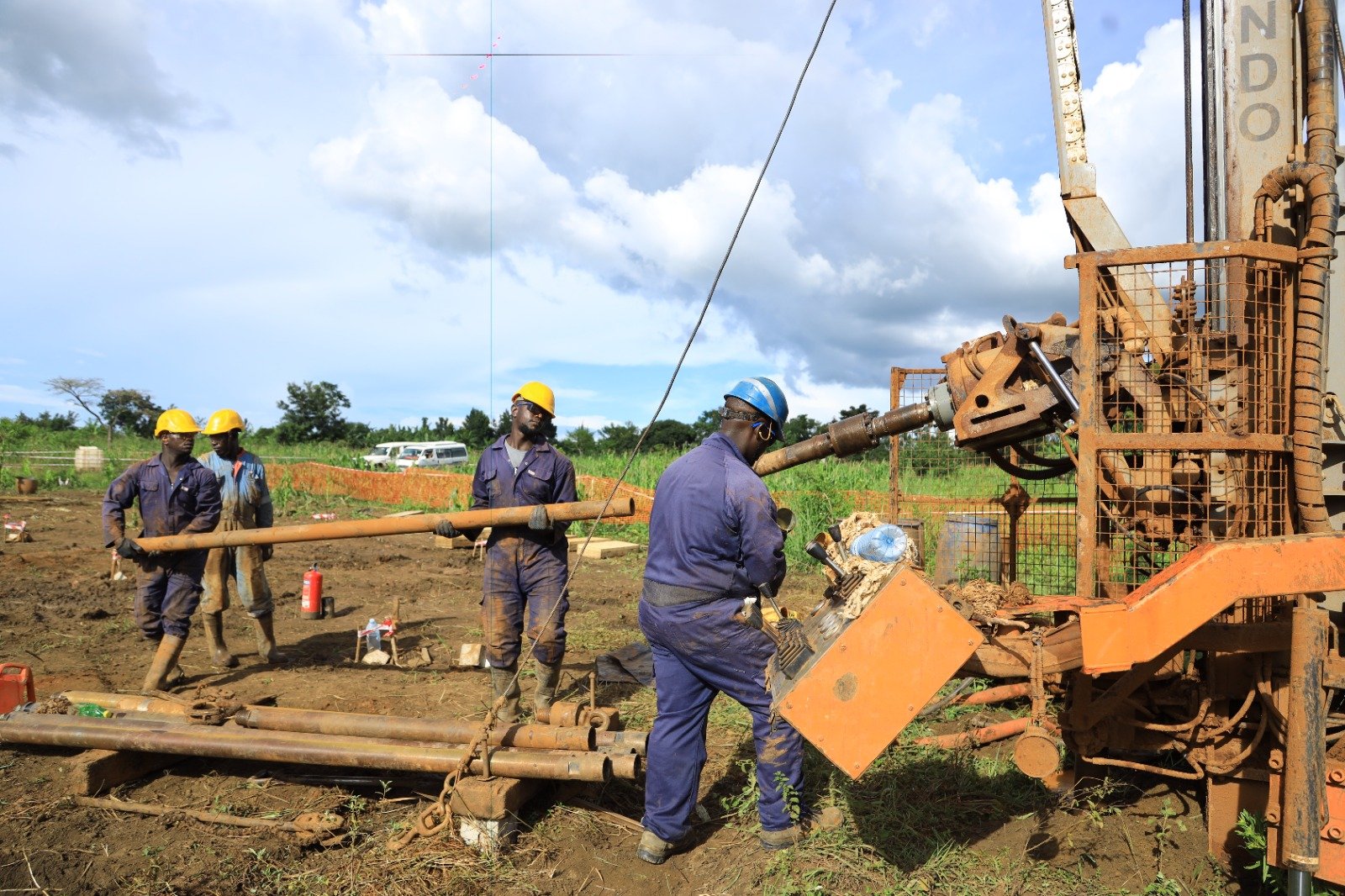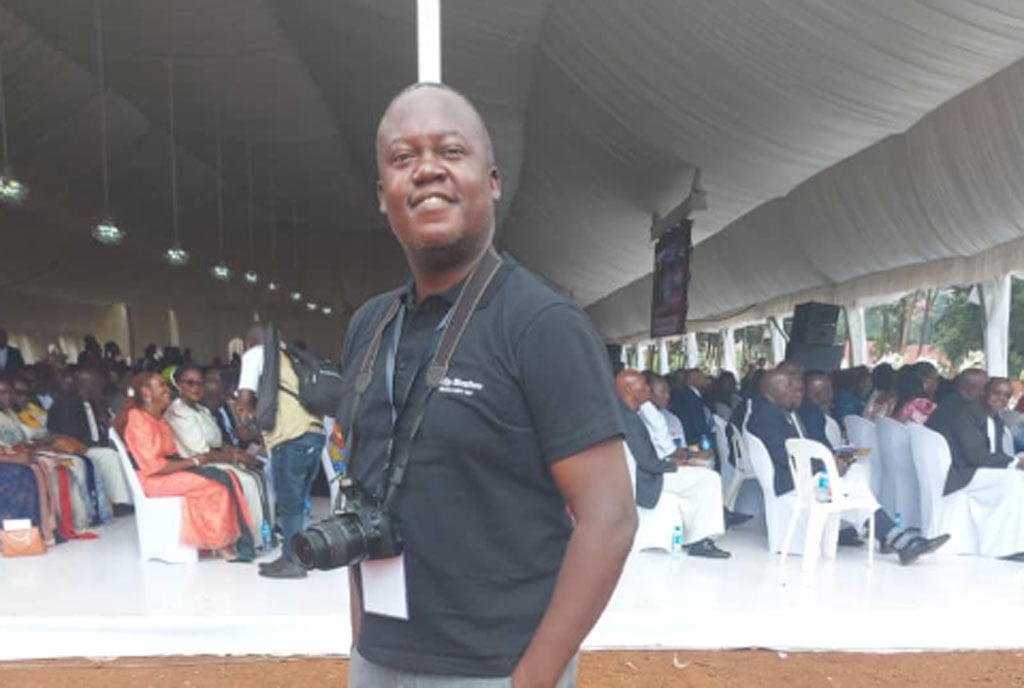Mineral exploitation in Busoga delayed until 2025

Workers of Rwenzori Rare Metals conduct grade control drilling in Nakavule Village, Makuutu Sub-county in Bugweri District in November. PHOTO | Courtesy of Rwenzori rare metals
What you need to know:
- Officials from Rwenzori Rare Metals (RMM), the company conducting the exploitation, say the delay was caused by the amendment of the Mines and Minerals Act
The commercial exploitation of minerals in Busoga sub-region has been pushed to 2025, according to Rwenzori Rare Metals (RMM), a private Ugandan company.
The company has been conducting exploitation of Rare Earth Elements (REE) in eastern Uganda since 2016.
For the past seven years, the company has been developing the Makuutu Rare Earth Project in Makuutu sub-county, Bugweri District, which stretches about 37kms across the districts of Bugweri, Mayuge, Bugiri and Iganga.
The project is one of the few clay deposits which contain high concentrations of heavy and critical metals necessary for strong magnets and other modern technology.
Earlier, Mr Warren Tregurtha, the RMM chief executive officer, said commercial production would start in the first quarter of 2024 and the company was applying for a mining licence and land access to start.
However, Mr Patience Singo, the company’s country manager, said due to the change of the Mines and Minerals Act from October 2022 to August 2023, the mining licence application and grant were frozen as the system had to align with the requirements of the new law.
“The delay in granting the mining licence due to changes in the (mining) laws has pushed the exploitation of minerals in Busoga to 2025,” Mr Singo said in an interview last week.
Mining licence
He added: “RMM submitted an application for a mining license in September 2022, but in October 2022, the Mines and Minerals Act was assented to by President Museveni and the new law brought about some changes in the administration of mining licence and need for updated mining regulations.”
Mr Singo said the mining regulations, which were gazetted in August, paved the way for the review of the Makuutu mining licence application.
“So, nothing could be fast-tracked regarding the land access agreements and other related mining licence grant procedures. However, despite the delay in the grant of the licence, the developer is continuing with mine development planning works such as the establishment of a demonstration plant,” he said.
On October 13, 2022, President Museveni signed the new Mining and Minerals Bill into a law.
The Mining and Minerals Act (2022) replaces the Mining Act (2003).
The company has so far invested more than $10m (Shs37.5b), and once commercial production starts, the project will have the potential to attract another investment portfolio of about $100m (Shs375b).
During a sensitisation meeting on the Land Access Agreement (LAA) for the Makuutu Rare Earth Project at Buwaya Village, Mayuge District in September, the State Minister for Energy, Mr Okasaai Opolot, warned against buying land in anticipation of the discovery of minerals.
“There is a huge discovery of rare elements in Busoga, but one of the impending developments of the minerals, wherever we discover them, are speculators or people who run ahead where we discover minerals,” Mr Okasaai said.
Adding: “The speculators come to buy land from the indigenous people because they want to exploit the government. They think they should be paid more money for the land.”
Mr Okasaai said speculators delay the implementation of projects and should be avoided.
The First Deputy Premier and Minister for East African Community (EAC) Affairs, Ms Rebecca Kadaga, also expressed concern over a plan to permanently impoverish Busoga Sub-region by exploiting her newly-discovered mineral deposits and natural resources.
Ms Kadaga, who is also the Kamuli District Woman legislator, challenged the Security minister to investigate reports that people are moving around villages with money, tricking locals into giving them their identity cards and stealing their land under dubious sale agreements.
“The security minister should trace the source of this money because this is a programme to impoverish us, take away our land and a strategy to own the land where minerals and our resources are,” Ms Kadaga said while officiating at a fundraising for Kamuli Archdeaconry Mothers’ Union at Balawoli Church in Kamuli District in July.
Ms Deborah Namirimu, the stakeholder engagement and communication specialist at RMM, said REEs are essential for the manufacture of medical equipment, smartphones, laptops, crude oil processing, batteries for electric vehicles, and wind turbines among others.
She said in October 2021, RRM completed one of its largest exploration drilling programmes or Phase 4 drilling programme for the Makuutu Rare Earths Project.
She added that with increased knowledge and confidence in the quantity, quality or grade and other geological parameters, the Makuutu Rare Earths project has dived into the last feasibility stage to justify the project’s economic viability.
“A successful feasibility study, which is the trial laboratory and demonstration plant, will lead to the development or mining phase of the project, but all through the exploration period, we have engaged in Corporate Social Responsibility (CSR),” she said.
How Busoga will benefit
Ms Namirimu said the Makuutu Rare Earth project could enable Uganda to progressively achieve its goal of increasing household income and improving the quality of life of Ugandans.
She added that the government, districts, and communities are set to benefit from the royalties of the project.
The royalties will be shared as follows; 80 percent will accrue to the government.
Also, 10 percent to the district local government, seven percent to the sub-county/town council, and three percent to the landowner or land occupant based on the size of the land.
Ms Namirimu said the company is committing one percent of the gross value of annual income as a community development fund, while other benefits will include revenue from taxes, employment, improvements, and development of social and economic infrastructure improvements in farmland, enhancement of farming skills and technology.
The project, she said, will provide training and work-ready programmes to facilitate local employment opportunities in addition to general education support to secure an ever-increasing pipeline of local university graduates into technical and managerial roles.
“There will also be potential work with the resettlement programme, including food farming, construction of resettlement housing, house maintenance and social services,” she said.
“The Makuutu Rare Earth Project will be a globally significant supplier of strong magnets and Heavy REE necessary to produce electric vehicles and wind turbines,” she explains.
She adds that REEs are essential for the transition from fossil fuel to renewable energy that is necessary to fight climate change which is already severely impacting Uganda’s agricultural industry through long dry spells and extremely heavy rains.
background
A 2005 government airborne geophysical survey covering 80 percent of Uganda detected new mineral targets such as Makuutu uranium anomaly (Makuutu Rare Earth), graphite (Kitgum), nickel, chromium, bentonite and uranium in various parts of the country.
The survey also revealed more extensions of Namayingo gold anomaly, Busia gold anomaly (Wagagai gold mine), Mubende (Kamalenge and Kisita artisanal mines) and iron ore (Kigezi region).
Subsequently, the Ministry of Energy and Mineral Development granted an exploration licence to Kweri Limited and Berkeley Reef Limited to undertake exploration and follow-up of the uranium radiometric anomaly at Makuutu since 2010.
The companies conducted further exploration that confirmed the existence of REE in mineable quantities in the districts of Mayuge, Bugweri, and Bugiri, thus attracting RRM to invest.
Further, geological studies by RRM including drilling have revealed 532 million tonnes of ore containing rare earth elements.





